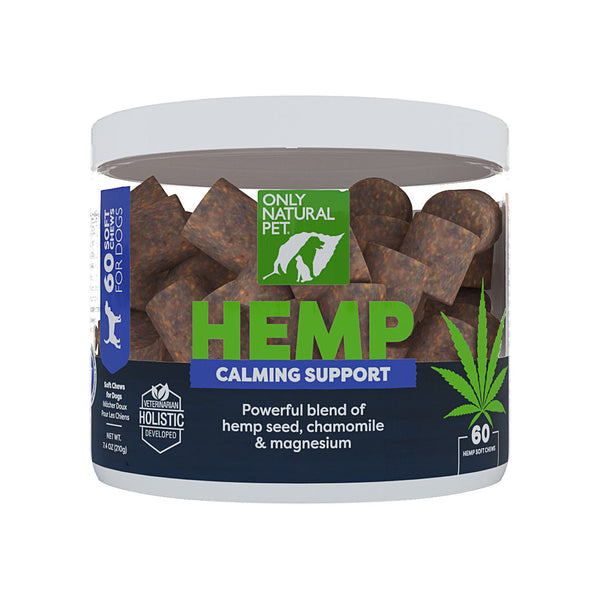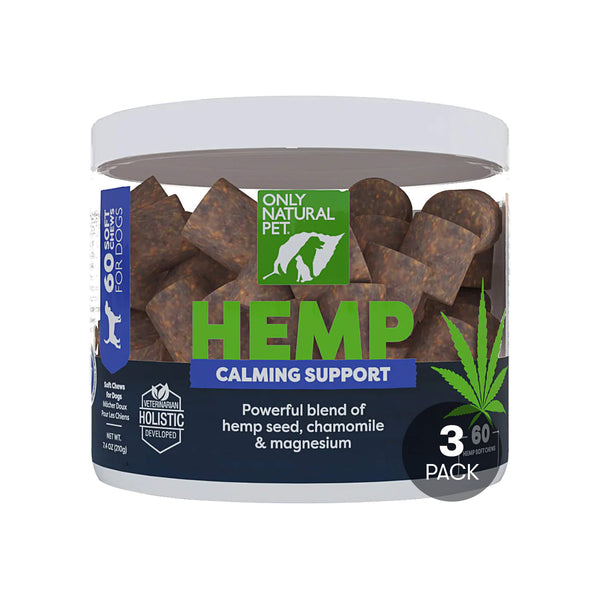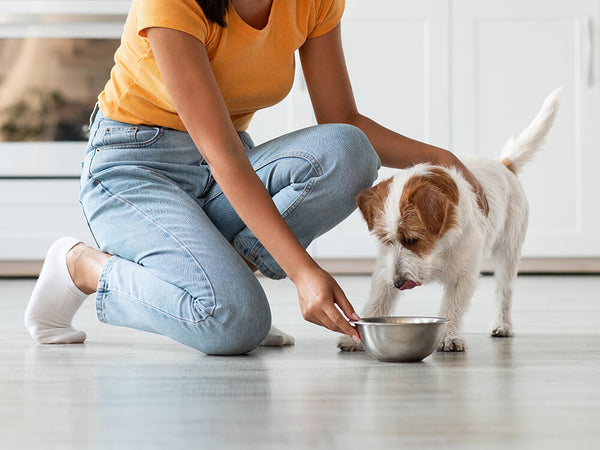Administering Natural Support to Your Dog or Cat
Written by: Dr. Jean Hofve, Holistic Veterinarian, DVM
So you've done the research and found the right approach or combination of approaches for your dog or cat's health. Great! You order the herbs or supplements and anxiously await the delivery of the package. The box arrives, you open it up, and call your pet to come get a "treat." (Hopefully you remembered to order some really delicious treats). That's a good start! Giving your companion a treat with the supplement bottle in hand will help them associate the supplement bottle with yummy treats. Now what?
If you are about to administer a supplement to a dog, breathe a sigh of relief and be thankful they're not a cat. If it's a tablet or capsule all you need is a little meat, cheese or peanut butter and down the hatch it will go. Just like Mary Poppins says, "Just a spoon full of sugar," (although don't actually give your pet a spoon full of sugar!)
Not so easy with a cat. Every cat owner has received at least one humorous email about "pilling a cat" that describes a hilarious scene involving multiple injuries and bandages applied to the cat owner, pills flying through the air, frequently to be inadvertently swallowed by said cat owner, and visions of retrieving angry felines from draperies and chandeliers. The reason we laugh so hard at these jokes is that they are not that far from the truth!
How to Give Natural Homeopathic & Herbal Supplementation to Your Dog & Cat
Here are a few hints to help you administer supplements to your companion. We'll start with how to work with liquids and later address "pilling a cat".
How to Administer Soft Chews
The good news is many supplement manufacturers are coming out with soft chew versions of their formulas. These have all the appearance of a treat, including shape, size, and texture, along with the beneficial ingredients.
If your dog or cat is not too discerning, these should be your first choice. They usually come with a delicious natural flavoring, like bacon, turkey or cream, and can be easily given by hand. Even if your pet is a little picky, you can usually sneak these into their bowl and they'll be none the wiser.
For incredibly picky pets, soft chew supplements will not always do the trick. The beneficial ingredients usually still have their residual flavor, so picky pets can detect it easily. Given the large size of soft chews, these are not recommended if your pet won't eat them easily. Instead, opt for a powder, a capsule you can open, or a small tablet you can get your pet to swallow (see below).
How to Administer Liquids
Liquid supplementation, such as herbs, homeopathics or flower essences, may contain a small amount of alcohol as a preservative. Some animals are sensitive to the smell or taste of alcohol so you may wish to remove it.
To do so, measure the dosage into a small vial or shot glass and let it sit out for 15-20 minutes to let the alcohol evaporate. Alternatively, drop the dosage into a small amount of heated water to speed the evaporation of the alcohol. The additional water will not affect the potency of the remedy.
Don’t hesitate to put a couple drops of the supplement on your own tongue so you know what it tastes like. Liquid herbal or homeopathic supplementation intended for pets should not be harmful for humans.
It is best to use a dosing syringe or extra dropper to administer the diluted supplement to your pet so you do not contaminate the bottle with bacteria from the animal's mouth.
Most herbal tinctures can be added to your pet's food, which will work well for dogs. Cats, of course, may reject their food if you add anything new. If you have a fussy feline, we suggest mixing the supplement with a bit of really yummy canned food or a treat.
Canned tripe works well as it has a strong smell and most animals love the taste. Re hydrated freeze-dried treats and tuna juice also do the trick.
A Note About Liquid Homeopathics
Most homeopathic supplements are best given at least 20 minutes before or after a meal. Ideally there should be no food residue in your pet's mouth.
Drop the liquid directly into your pet's mouth or on the gums (after evaporating the alcohol). If this proves impossible for your companion, then mix the remedy with a small amount of food or a treat.
How to Administer Homeopathic Pellets
Some homeopathic supplementation come in small pellet form. Just like liquid homeopathics, these are best given 20 minutes before or after a meal, and when there is no food residue in your pet's mouth.
Since these pellets are generally small, many dogs will swallow them without even noticing. For finicky dogs and cats, you can grind these up into a powder and sprinkle them on your pets tongue. However, depending on the ingredients, this could have an off putting or bitter flavor. If you can, the best course of action is having your pet swallow the pellets the same way they would a capsule or tablet (see below).
How to Administer Tablets & Capsules
Tablets and capsules present a bit more of a challenge. Some guardians have perfected the practice of opening their companion's mouth and popping the pill far enough back that the animal is forced to swallow it.
This is fine if it works for you, but it is very important that you follow administration of the pill with enough liquid or food to wash the pill down the animal's throat. We don't swallow vitamins or pills without water or food and we should not expect an animal to do so either.
The lining of the esophagus is delicate and easily irritated by pills or capsules that pass too slowly or get stuck. Painful ulcers can develop when some herbs or supplements remain in the esophagus too long.
Some dogs and cats will not voluntarily drink water if a pill is stuck in their throat-so encourage them with bone broth, tuna juice, diluted canned food, or baby food. Coating the tablet or capsule with butter prior to administering might help it go down more smoothly as well.
Do not tip your companion's head up and try to force them to swallow the pill this way; it is much more difficult to swallow with the head tilted up. After dropping the pill in, let your dog or cat's head return to a normal position and gently hold their mouth closed. Tickling the throat or blowing into the nose softly may encourage them to swallow.
Some dogs will readily swallow tablets or pills in a treat if you break the pieces small enough for them to swallow easily, which is a lot less stressful than prying the mouth open and administering the pill dry. Surround the pill with cheese, peanut butter, or a bit of canned food, whatever your dog or cat really loves.
If you have a companion with a dexterous tongue who tends to find the tablet or capsule inside the treat, it helps to give a couple treats without the pill first, so they are not suspicious, and then follow with the hidden pill. Try not to make the treat so large that they must chew or maneuver it around in their mouth. You want them to just taste and swallow. Pill Pocket treats can make the whole job much easier as they are tasty treats designed to hide a pill in. Another option is to crush tablets and open capsules to mix with food for dogs.
Pilling a Cat
Which brings us back to the tricky issue of pilling a cat. The first step is to retrieve the first aid kit from under the bathroom sink. (OK, hopefully not). The calmer you are about this procedure the less anxious your cat can be, and the more likely you will be able to repeat this a second time (hopefully as many times as need be). Begin with a picture in your mind of the entire procedure going quickly and smoothly. Got that vividly imagined in your mind? Good, now
- Get the tablet or capsule out and handy FIRST (this is much harder once you have a writhing feline under your arm). Coat the tablet or capsule with butter. Also have a dropper or syringe with ½ tsp or so of liquid nearby.
- Some cat guardians find it easiest to wrap the cat in a towel to avoid those troublesome claws.
- Kneel on the floor and put the cat between your knees (head facing forward of course). You can close your feet around the back of the cat to prevent an escape through the rear. Some people prefer to hold the cat on a table or counter and tuck the cat's rear into the crook of their elbow. Whatever position you choose the cat should be positioned in front of you with their head facing away, so that they cannot back away. It is important to approach the cat from the side or rear with the pill. Do not approach from the front or they will be more anxious and more likely to escape.
- With your hand over the cat's head, tilt their nose to the ceiling and gently pry their mouth open, inserting the thumb in one corner of the mouth and a finger in the opposite corner.
- With the other hand, grasp the pill between your thumb and index finger. Use a free finger to push down in the center of the lower jaw between the two canine teeth (long teeth), just inside the cat's mouth to open the mouth wide enough for you to insert the pill.
- Try to place the pill back far enough on the tongue (beyond the "hump") but do not put your fingers so far back as to cause the cat to gag. Then let the head return to normal position.
- Smear a little butter on your cat's nose, lips or paw to encourage them to lick and swallow, or blow on their nose.
- Now slowly squirt the dropper or syringe of water or other liquid into your cat's mouth to help move the pill down the esophagus.
- Pet and praise profusely (provided your cat has not yet escaped), and give them a yummy treat (which will further help to wash the pill down). Freeze-dried treats are a favorite and can be crumbled and mixed with water for a paste consistency if need be.
Things to Note
As long as your cat's head is elevated, with their nose pointing up, they cannot bite you. Do not try to pill a cat with their head in a normal position or you may be bitten.
Drooling or foaming at the mouth is not unusual for a stressed animal, particularly after administering a supplement. It is a good idea to check your dog or cat's mouth to make sure the pill is gone before releasing them.
Some cats are quite clever and will "pretend" to have swallowed the capsule only to walk away and deposit it behind your sofa. Most dogs are, thankfully, a bit less sneaky and will just drop the pill at your feet so you can retrieve it and try again.
Conclusion
After you reward Fluffy or Fido for taking their supplement, don't forget to reward yourself for being so clever. A bit of chocolate or a glass of wine, whatever defuses the stress, just so you don't hide under the bed when it's time to administer the next dose.






























